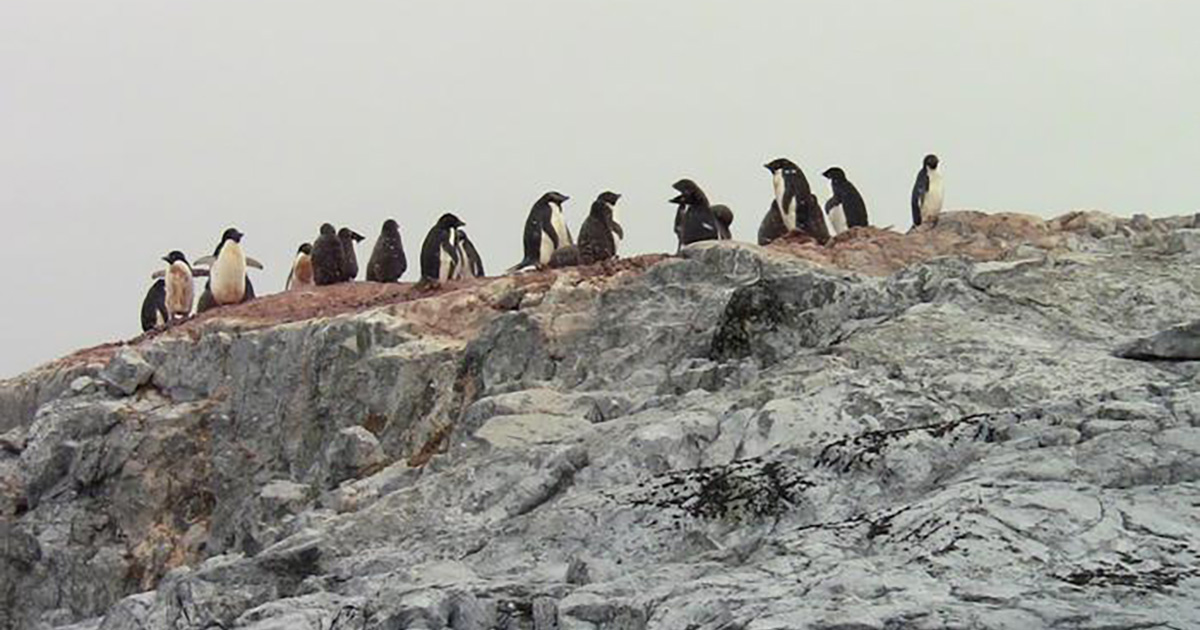Toxic Trails: How Mercury Silently Invades Penguin Ecosystems
Environment
2025-04-15 18:29:01Content

In a groundbreaking study exploring the environmental impact of mercury contamination, scientists have delved into the world of Antarctic penguins to uncover the extent of this toxic metal's reach. Researchers meticulously collected and analyzed adult penguin feathers from a critical breeding site near Anvers Island along the West Antarctic Peninsula, seeking to establish a comprehensive baseline for mercury pollution in one of the planet's most pristine ecosystems.
By examining these delicate feather samples, the research team aims to shed light on the complex pathways of mercury contamination in one of the world's most remote and fragile environments. The study not only provides crucial insights into the current state of mercury pollution but also serves as a vital benchmark for future environmental monitoring and conservation efforts.
The investigation represents a significant step in understanding how human-induced environmental changes are impacting even the most isolated regions of our planet, offering a unique window into the far-reaching consequences of global pollution.
Mercury's Silent Invasion: Unraveling the Environmental Threat in Antarctic Penguin Habitats
In the pristine and fragile ecosystem of Antarctica, a hidden environmental crisis is unfolding. Scientists are uncovering alarming evidence of mercury contamination that threatens the delicate balance of marine life, with penguins serving as critical indicators of this global environmental challenge.Tracking Toxic Traces: A Groundbreaking Environmental Investigation
The Antarctic Mercury Monitoring Project
The West Antarctic Peninsula has become a critical research site for understanding the complex dynamics of mercury contamination in marine ecosystems. Researchers have embarked on an unprecedented scientific expedition to map the intricate pathways of mercury pollution, utilizing penguin feathers as unique biological markers. These seemingly innocuous feather samples represent a treasure trove of environmental data, offering unprecedented insights into the broader ecological implications of heavy metal contamination. The research methodology represents a sophisticated approach to environmental monitoring. By carefully collecting and analyzing adult penguin feathers from breeding sites near Anvers Island, scientists can reconstruct a comprehensive narrative of mercury's environmental journey. Each feather becomes a microscopic archive, preserving chemical signatures that reveal the complex interactions between marine environments, atmospheric conditions, and biological systems.Ecological Implications of Mercury Contamination
Mercury's presence in Antarctic ecosystems represents a profound and multifaceted environmental challenge. Unlike localized pollutants, mercury demonstrates remarkable mobility, traversing vast geographical distances through atmospheric and oceanic currents. The Antarctic region, often perceived as a pristine wilderness, is not immune to these global contamination patterns. Penguins, as sentinel species, play a crucial role in understanding these environmental transformations. Their position in the marine food chain makes them exceptional indicators of ecosystem health. The accumulation of mercury in their biological systems provides researchers with a nuanced understanding of long-term environmental changes, revealing patterns that might remain invisible through traditional monitoring techniques.Technological Innovations in Environmental Research
Advanced analytical techniques have revolutionized our ability to detect and quantify mercury contamination. Cutting-edge spectroscopic methods and molecular analysis enable researchers to trace mercury's complex migration patterns with unprecedented precision. These technological breakthroughs transform our understanding of environmental pollution, moving beyond simplistic measurements to comprehensive ecological assessments. The research team employed state-of-the-art instrumentation to extract minute chemical signatures from penguin feathers. Electron microscopy, mass spectrometry, and isotopic analysis provided a multi-dimensional view of mercury's environmental trajectory. Each technological intervention represents a significant leap forward in our capacity to understand and potentially mitigate environmental contamination.Global Climate Change and Contaminant Dynamics
The intersection of climate change and mercury contamination presents a complex and evolving environmental narrative. Warming temperatures are altering Antarctic marine ecosystems, potentially accelerating mercury's distribution and biological absorption. Melting ice sheets, changing ocean currents, and shifts in marine food webs create unprecedented conditions for contaminant migration. Penguin populations serve as living barometers of these environmental transformations. Their physiological responses to mercury exposure offer critical insights into the broader ecological consequences of global environmental changes. By studying these remarkable creatures, scientists can develop more sophisticated models of environmental resilience and vulnerability.Future Research and Conservation Strategies
The current research represents more than a scientific investigation; it is a critical step towards developing comprehensive environmental protection strategies. Understanding mercury's complex ecological dynamics enables policymakers, environmental scientists, and conservation experts to design targeted interventions. Collaborative international research initiatives will be crucial in expanding our understanding of mercury contamination. Interdisciplinary approaches that combine marine biology, chemistry, climatology, and ecological modeling will provide the most comprehensive insights into these complex environmental processes.RELATED NEWS
Environment

Environmental Showdown: Activists and NWI Clash Over Trump's EPA Budget Bombshell
2025-03-02 11:00:05
Environment

Behind the Laugh Track: 'Friends' Star Reveals Dark Set Secrets of a Sitcom Gone Sour
2025-03-07 13:31:43
Environment

Community Volunteers Transform Local Trail: Sperryville's Green Makeover Exceeds Expectations
2025-04-02 22:33:00





